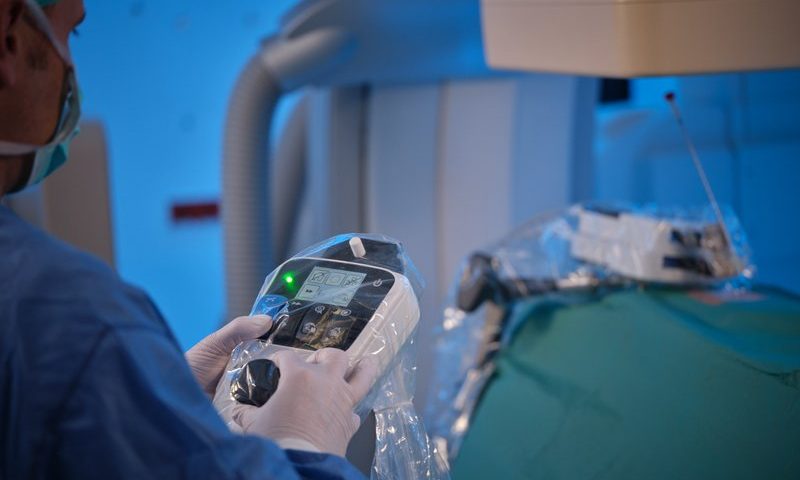Not all surgical robots have to be large, octopuslike machines with multiple arms and tools—they can be quite small to get a specific job done.
Enter Interventional Systems’ Micromate, a boxlike motorized robot that attaches to the operating table and allows surgeons to conduct image-guided, percutaneous procedures remotely without exposing themselves to the radiation that comes with real-time fluoroscopy or CT scans.
The Austrian devicemaker received a 510(k) clearance from the FDA for its miniature machine, opening a path for the company to start building a U.S. presence.
The Micromate is designed as a universal instrument guidance solution and works with a surgeon’s own equipment for nearly any procedure conducted with a straight needle through the skin, such as guided biopsies and ablations.
Using a joystick, the surgeon can line up and guide the needle from entirely outside the operation room. In fact, Micromate is small enough to fit between the patient and the surrounding imaging hardware.

“After a successful start with our partners in Europe and [with] over 10 years of experience in medical robotics, we decided it was about time we reached the other side of the pond,” the company’s founder and CEO, Michael Vogele, said in a statement. “We are sure our product is bound to democratize medical robotics in the U.S.”
Interventional Systems said it plans to roll out its device over the second half of this year through centers of excellence and third-party commercial partnerships for robotic-guided procedures.
Similar efforts from companies such as Microbot Medical aim to do the same for catheter-based procedures to help spare surgeons from radiation exposure and the physical stress of standing over a patient for hours at a time.
Microbot’s Liberty machine is designed to strap to a patient’s thigh for neurovascular and cardiovascular interventions by pushing and guiding a catheter via a handheld remote, not wholly unlike a video game controller. The device delivered positive results in early animal feasibility studies this January.

